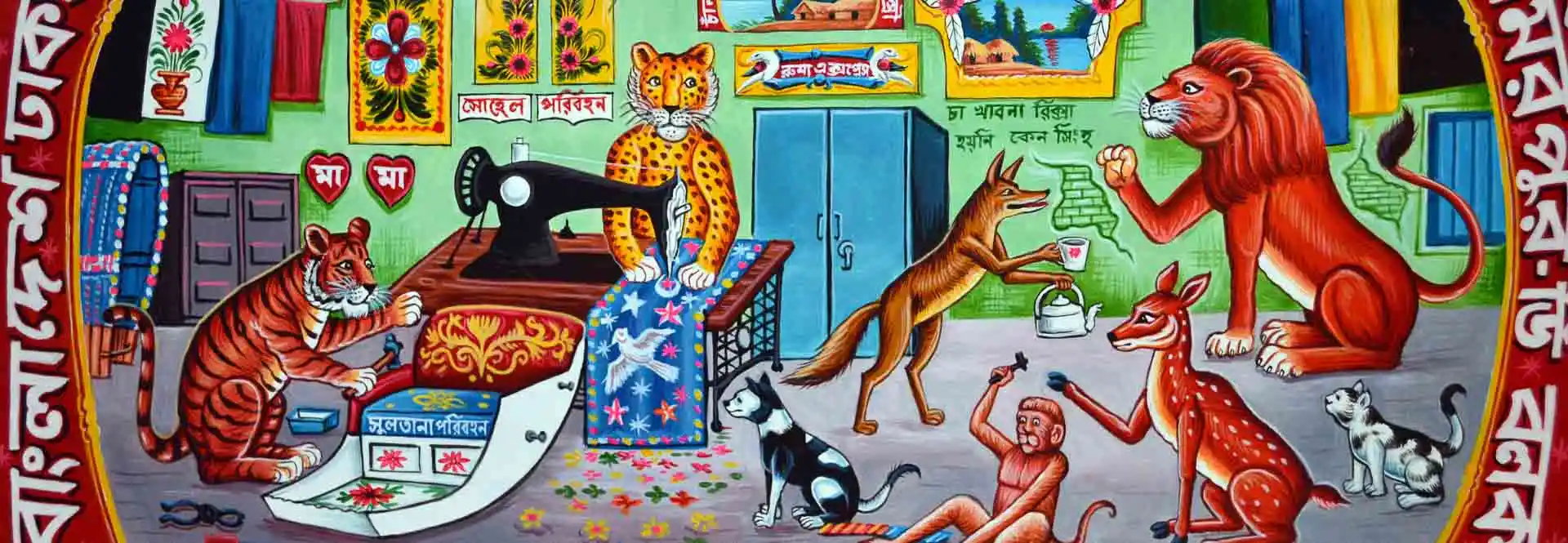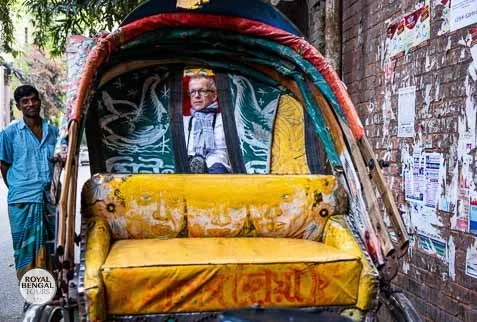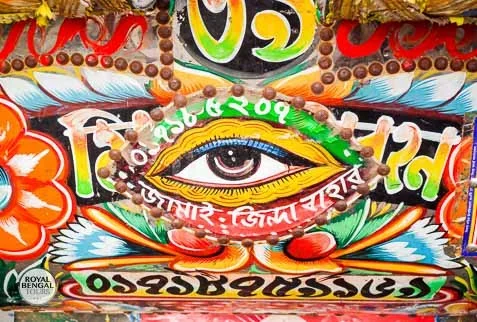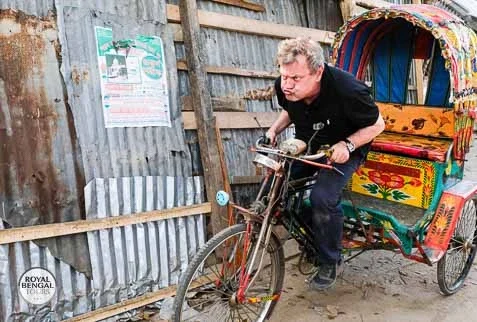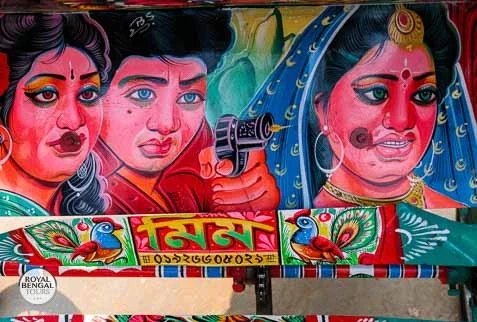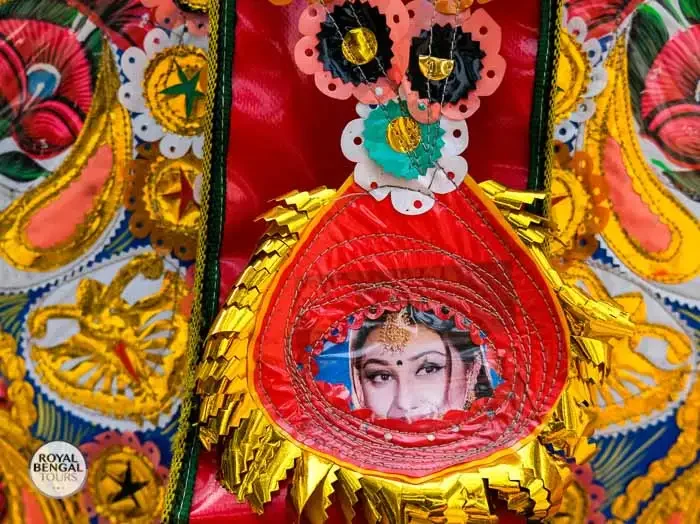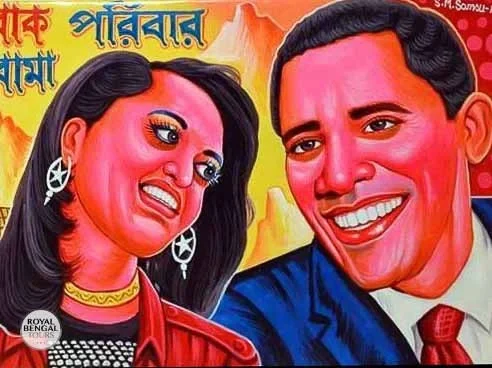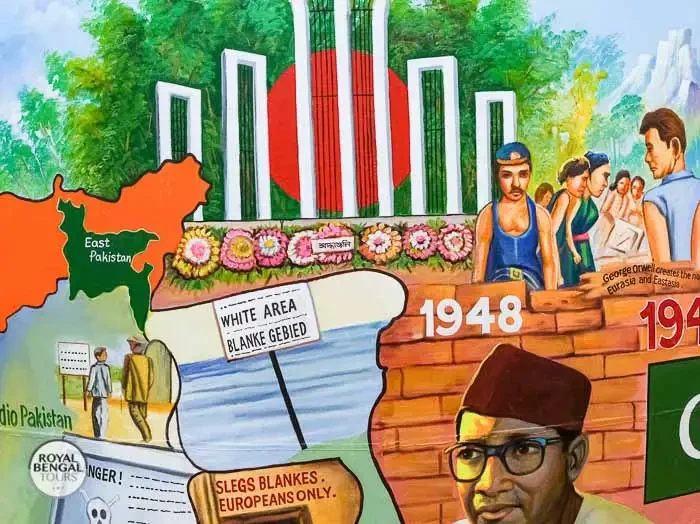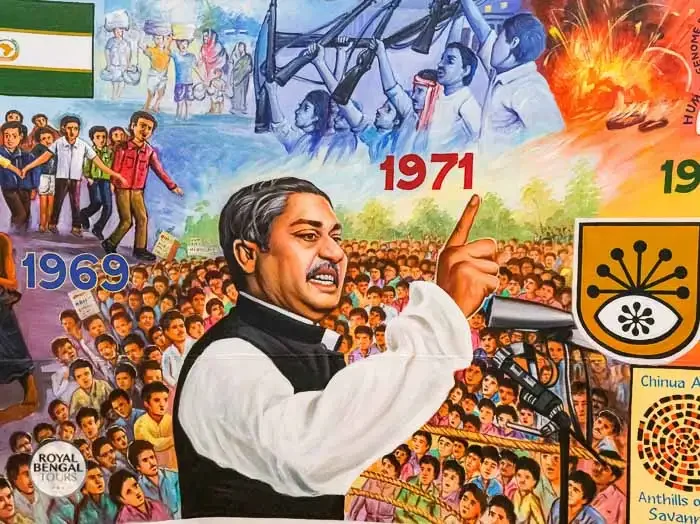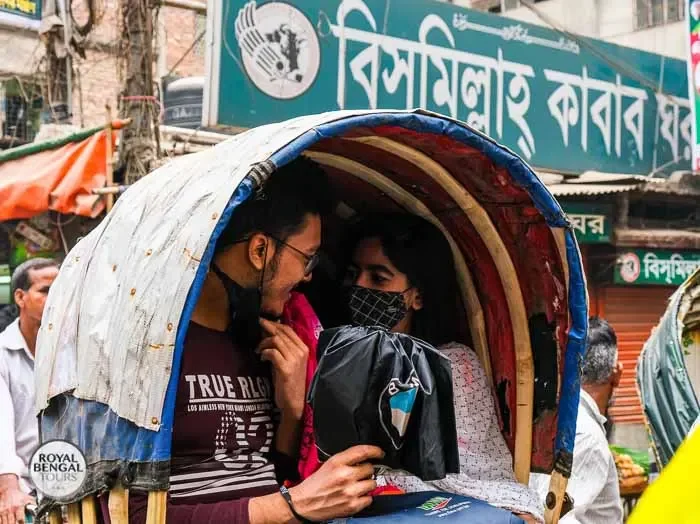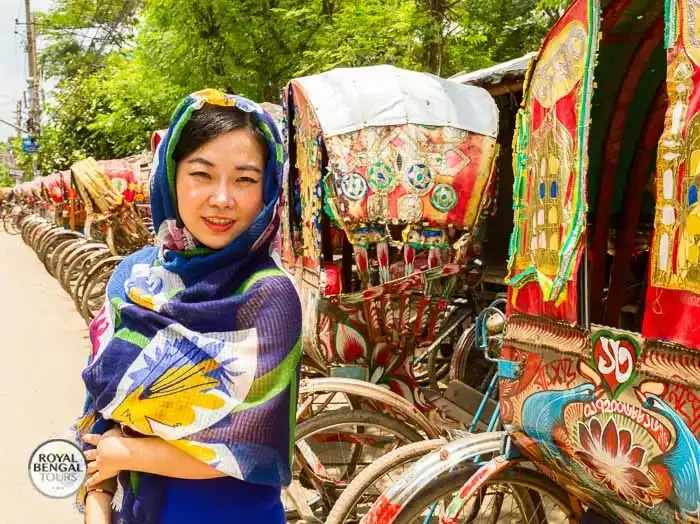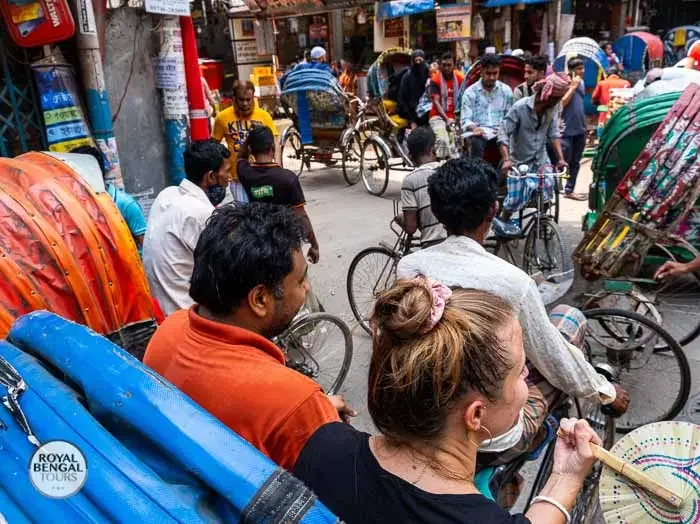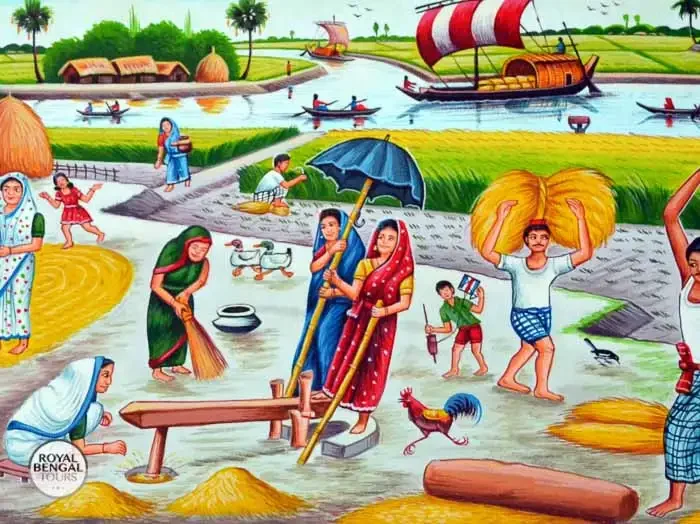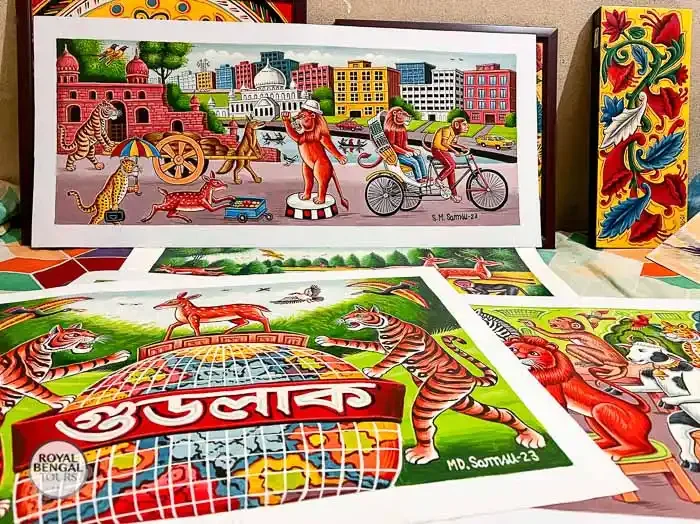People have been charmed by the sixty-year-old art form associated with rickshaws, more formally known as rickshaw art or rickshaw painting. Like transport painting elsewhere in the world, rickshaw painting in Dhaka has assumed an identity and a charm on its own. Variously described as “naive”, “commercial”, or urban-folk” art, rickshaw art has developed steadily since the 1950s, undergoing transformations as its scope expanded. While the entire rickshaw usually has floral decoration, the backplate contains the main artwork. The themes depicted therein have changed over time, reflecting changing social realities and shifts in public taste. At first, the main subjects consisted of the romanticized image of popular film heroes and heroines. Over the years, though, rickshaw painting has taken as its subject a wide range of themes and images: village landscapes, real-life events such as the liberation war of 1971, fantastic looking gardens that appear right out of some J.R.R Tolkein book, postmodernist cities, animals and birds, public monuments, mythic and fairy tale figures, airliners, and cruise ships and religious or devotional icons and images.
The main ‘canvas’ is recycled enamel painted tin collected from a drum of cooking oil, for example. This forms the lower backboard, which is the most visible paint area and the heart of rickshaw art. This rectangular piece of tin plate is not bigger than 45cm X 25cm in size and secured between the two back wheels, some way above the ground, and is clearly seen even from a distance. Rickshaw is heavily painted over in rich, profuse designs and patterns, the seat cover and the collapsible hood, usually made of bamboo, rexine cloth and plastic, are profusely painted. Applique work is often done on the hood and the upper back part of the body. The artist also decorates the seat, the curved back of the seat, handlebars, the chassis and just about every other surface. Therefore, every rickshaw is a moving picture gallery.
Unfortunately, the economy of mass production and consumerism has finally arrived, posing a major threat to the sixty-year-old tradition of rickshaw art. Only 10-15 per cent of the rickshaws today display old-fashioned, hand-painted art. Rickshaw painting is certainly not a sophisticated form of art, but neither is it a naive display of artistic inclinations. It is a public form of art where a combination of factors plays an important role – the economic status of the painter, his particular taste and training, the taste of the clients, the public preference for particular images at a particular time, etc. Rickshaw art is a folk art of a kind that thrives on particular myths, symbols and icons, with distinctive urban colouring. We may call this a form of urban folk art, with a considerable portion of popular art elements thrown in. But whatever label we may give to rickshaw painting, one thing is certain: we will have this art form with us only for a decade or two more. Which thought makes one wonder: how many art forms are there in the history of art that has encapsulated the popular imagination so comprehensively and yet were unable to survive even for a hundred years?


